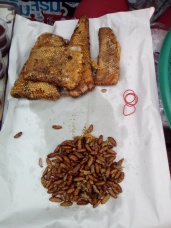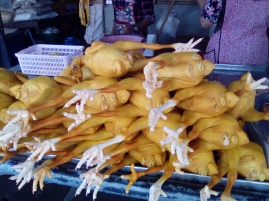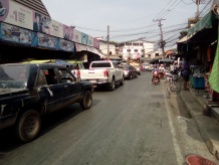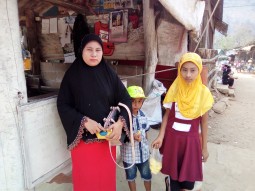In the last few years, the world has witnessed the atrocities done to Rohingyas in the Rakhine state. Genocide, rape, mass murders, mass graves, and villages and communities disappeared from satellite photos and become scorched earth. International communities and the United Nations are angry at what the Burmese authorities are doing to the Rohingyas. Daw Aung San Su Kyi was taken to task for not speaking out and being defiant at the Rohingyas’ plight and mercy. Some celebrities that used to praise her for her peaceful fight against the Burmese Junta regime eventually condemned her and even returned their human rights work accolades that they were presented together with her. Having said all that the West and the United Nations have never been interested in the plight of Burma except for the fact that they thought to have Daw Aung San Su Kyi as freedom fighter the world would be a better place.
But that’s not the case, is it?
Even when the British Colonials allowed the independence of Burma, Burma was a broken country with numerous ethnic groups unprepared to be ruled by one group, the Barman/Burman, led by Daw Aung San Su Kyi’s father, General Aung San. Despite General Aung San was able to get the Burmese ethnic groups to come together, some in his ranks saw that he was a threat to the Barman/Burman ethnicity and thus he was betrayed and assassinated. That led to the rebellion amongst the many ethnicities in the rural communities and states in the Northern and Eastern Burma.
So who are these groups then?
The Barman/Burman is the largest group and basically, the whole nationalism revolved around this main ethnic group which is about 68%. Then there are 8 minorities groupings that makeup about 27.5% of the Burmese population. And lastly, another 5 other minority groups that make up the rest of the 4.5%.
The 8 minority groupings are: (1) Shan – 9%; (2) Kayin (Karen) – 7%; (3) Rohingya (Arakanese=Rakhine) – 3.5%; (4) Chinese (Chin) – 2.5%; (5) Mon – 2%; (6) Kachin – 1.5%; (7) Indians – 1.25% and; (8) Kayah – 0.75%.
The other 5 minor minority groupings are (1) Wa; (2) Naga; (3) Lahu; (4) Lisu, and; (5) Palaung.
Many of these ethnic groups can also be classified down to further sub-ethnic groups and there are some 135 sub-ethnic groups in these groupings. And the information can be sourced from here.
The Barman/Burman wanted total control of the lands and the natural resources and refused to indulge in autonomy by the various ethnic groups and sub-groups demands. When the British Colonials left the country after independence, they also did not care about what would entail in the foreseeable future and when the independence of the nation was handed over to the Barman/Burman people, they thought it was a right thing to do. But how wrong they were. During the Colonial years, the British favoured the rural communities more because most of them are Christians as compared to the Barman/Burman who is basically Buddhist. The divide and rule proportionality gave the rural ethnic communities space to breathe as they knew the Colonials were their protectors. But after the British Colonials left, peace began to deteriorate and the ethnic communities did not see how they can be ruled by another ethnic group in which they had any connection at all.
Hence 1963, the Burmese/Barman regime under General Ne Win saw that the country was reeling away and the many rich natural resources will also become unattainable because the lands were under the ethnic groups. General Ne Win launched a coup d’etat, deposed an elected regime and introduced the ‘4 cuts strategy’ campaign, aimed largely at suppressing the support from ethnic communities for supporting opposition ethnic rebellious armies and thus cutting off the: (1) Food supply; (2) Funds to support the rebellion; (3) Intelligence to the ethnic armies; and (4) Recruitment within the ethnic groups. They utilized a similar policy against the Rohingyas/Arakanese. But of course, the methodologies against the Rohingyas were made even crueller like genocide.
During the wars, many of these communities ran away from their rural commune and many sought refuge in Thailand. Today there are as many as 100,000 displaced persons and refugees from these parts of Burma.
There are 9 refugee camps in Western and Northwestern Thailand and the largest of them all is Mae La Camp that’s about 75 minutes away (57 Km) from the town of Mae Sot in the province of Tat in Thailand. Mae La Camp has about 37,000 refugees and displaced persons of various ethnicities.
On 2nd April 2018, I did a quick excursion trip to Mae La Camp. At about 9am I took a Song Teauw together with the Thais and ethnic Burmese. The Song Teauw actually traverse between Mae Sot and Mae Sariang on Highway 105. Just slightly before the hour, there are a number of checkpoints. According to a conversation with an ethnic Kachin girl, she noted that the main purpose is to monitor drug trafficking which is a problem for the Mae La Camp community. In fact, there was a DARE Centre at Mae La Camp, and the purpose of the rehabilitation centre is to offer programmes for individuals addicted to ecstasy (methamphetamine), heroin, and alcoholism. DARE stands for Drugs and Alcoholism Rehabilitation. But nevertheless, I think it’s not only drugs the Thai authorities are worried about. Other issues could be human trafficking, and more importantly, mass exodus from the states of Kachin and Kayin (in Burma) that’s about 8 Km from the Burmese-Thai border.
The number of checkpoints act as lookouts and if one is breached further up the road, reinforcements can be resolved immediately to stop the rush into other various cities and provinces in Thailand. Just last week, Rohingya boat people, from Cox Bazar in Bangladesh, had their journey cut short between Koh Ha and Ko Lanta, off the province Krabi, by the Thai Navy. The Rohingyas were supposed to travel to Malaysia and disappear.
Many of the displaced persons and refugees from Mae La Camp have already resigned to the fate that their livelihoods now are in Thailand. Fortunately, many of these refugee camps in Western and Northwestern Thailand have full commitment from the well to do ethnic communities that have resided in Thailand for some time (even perhaps before the troubles) and they sought sizeable assistance from voluntary groups in Thailand and as well as international voluntary groups that are mainly Christian organizations. Many of these organizations developed educational programmes that preserved ethnic identities and as well as offering English education.
The young Kachin girl I met in the Song Teauw, her command of English was commendable. Initially, I was not able to tell whether anyone was able to converse English other than their ethnic languages and Thai. But when she took out of her bag, an English book called, “Phantom of the Opera,” immediately, I sought a conversation with her.
We did not get into the pleasantries because I knew the situation can be demanding and difficult for her, as these people preferred not to be known, thus, I decided to ask her about her origins. She told me she’s of Kachin descent (from Kachin state) but her mother is Cantonese. Her parents divorced long ago, leaving herself, mother and sister to look after themselves. In the bus, together with her mother and nephew, they were going to Mae Sot to look for her sister who’s working in town.
She told me, the camp is lucky because there are some 40 primary and secondary schools. Two schools are top notch and the Australian Catholic University is offering a Diploma in Liberal Arts program at the camp. Successful and bright students are offered scholarships either from the Australian Catholic University or other tertiary institutions in Australia. This is one great path they can seek to render themselves opportunities and thus become citizens of another country. Despite the opportunity offered by the Australian institutions, a thought came into me and thus I asked her how is it possible for Australian institutions to offer scholarships since these refugees don’t have proper documentation, like passports? Perhaps, there’s a policy in Australia that really allow bright and successful refugees to reside in Australia and this is another way of attracting talents to the needed industries in Australia.
One thing we both agreed that many application forms whether its to apply for a school or papers to get citizenry documentations requires the acknowledgement of ethnicity. In a way it’s great and at least the country recognizes an ethnic group and thus there’s statistical documentation. However, its bad as well, when even in Australia these ethnic groups can be recognized and ultimately being discriminated. In Canada, many application forms do not need ethnic groups to specify their ethnicity any longer.
Another great development program for these refugee communities in Thailand is that they are free to farm crops and livestock. The Kachin girl brought a big bag of cow’s milk that was requested by her auntie to be sold in another community. This is fresh cow milk and not those run of the mill product that’s sold in the supermarkets. Crops like bamboo shoots, maize, sugar cane, and various vegetable crops are sold in the wet market and night bazar in Mae Sot. Of course, other exotic delicacies like bugs food, and exotic animals like the black small leatherback turtles are sold at the market as well. Not sure whether these are endangered species.
Mae Sot, a vibrant migrant town, in the Tat province in Thailand, is a diaspora of tastes, peoples, and peaceful livelihoods. This is one town where Muslims thrive as well. Despite there are Rohingyas, there are other ethnic Muslims, mostly comprising the Karen (Kayin) and Kachin group. As a matter of fact, there’s one small Kachin Muslim village and the Tatmadaw (Burmese Junta Regime) had completely obliterated the village. They are perhaps only a few hundreds of these Muslim Kachins and now mostly they are in Mae Sot or at the Mae La Camp. Many of these Muslims are skilled at the roti business. Roti is the famous Indian or Pakistani flour flattened bread better known as Chapati in India or Singapore or Roti Canai (in Malaysia). Despite they are displaced people or refugees, in fact, they do pretty well in Mae Sot and their businesses are flourishing.
Daw Aung San Su Kyi tried a number of times to get these ethnic groups to sign the Nationwide Ceasefire Agreement (NCA) and upon signing to repatriate them back to Burma. However, these promises are vague and do not prepare for the ethnic groups to settle into ease. There’s the question of what entails and do the Burmese government promised to supply sufficient accommodation, offer land compensation, and allowing ethnic education to prosper. What prospects are available for the young adolescence and what future the Burmese government intend to provide for the future of these ethnic groups. Many of these ethnic groups, despite being refugees and displaced persons in Thailand, the future seemed brighter to them. Of course, right now, they don’t have identities and a country to call home, besieged by poverty and discrimination in Thailand, but at least there’s a path and light in the tunnel. If they returned, they are worried about the fact that they’d even be in dire straights. What Su Kyi wanted to do is not comprehensive enough and not called for and thus many parties have disagreed.
Similarly, the Rohingyas fate in Cox Bazar is seemingly dim even when Su Kyi and the Burmese authorities agreed with the international bodies to allow them to return. The question is how to resettle these displaced persons and refugees. Many of their homes have been scorched and many of the lands are perhaps scattered with land mines. How do the Burmese government go about implementing harmonious policies since many in the ranks refused to accept even to recognize Rohingyas as an ethnic group? Do the Burmese government ever want to progress on harmonious policies and enforcing against hatred and discriminatory practices and policies? That said, they also need to allow freedom of religion which in many Burmese Buddhist quarters, they think Islam is evil. To date, no ethnic groups are comfortable at all, as long as the Junta or Tatmadaw policies are dictating the country.






































Those of you who think you want to do this as a tourist sort of activity, well, its not advisable unless you joined an NGO and help the community. Refugees are not human caged subjects for the viewing pleasure of others. Their lives are undoubtedly hard already, and this does not give pleasure or benefit. If you think you can help or donate then do so in a germane and honest manner. Every action counts. Thank you.
LikeLike
During when Nargis storm wrecked the Burmese nation especially in the Delta regions, the Tatmadaw regime used the divide and rule strategy to wreck the hopes of the Burmese terrified for their survival after the storm in 2008. We are NOT talking about the ethnic Burmese, but poor ordinary Burman/Burmese that hailed from Mandalay and Yangon (Rangoon). Whether it’s the 4-Cuts Strategy Campaign or the Divide & Rule Campaign, its also the British Colonials who taught the Tatmadaw regime how to take on the poor and the weak.
LikeLike